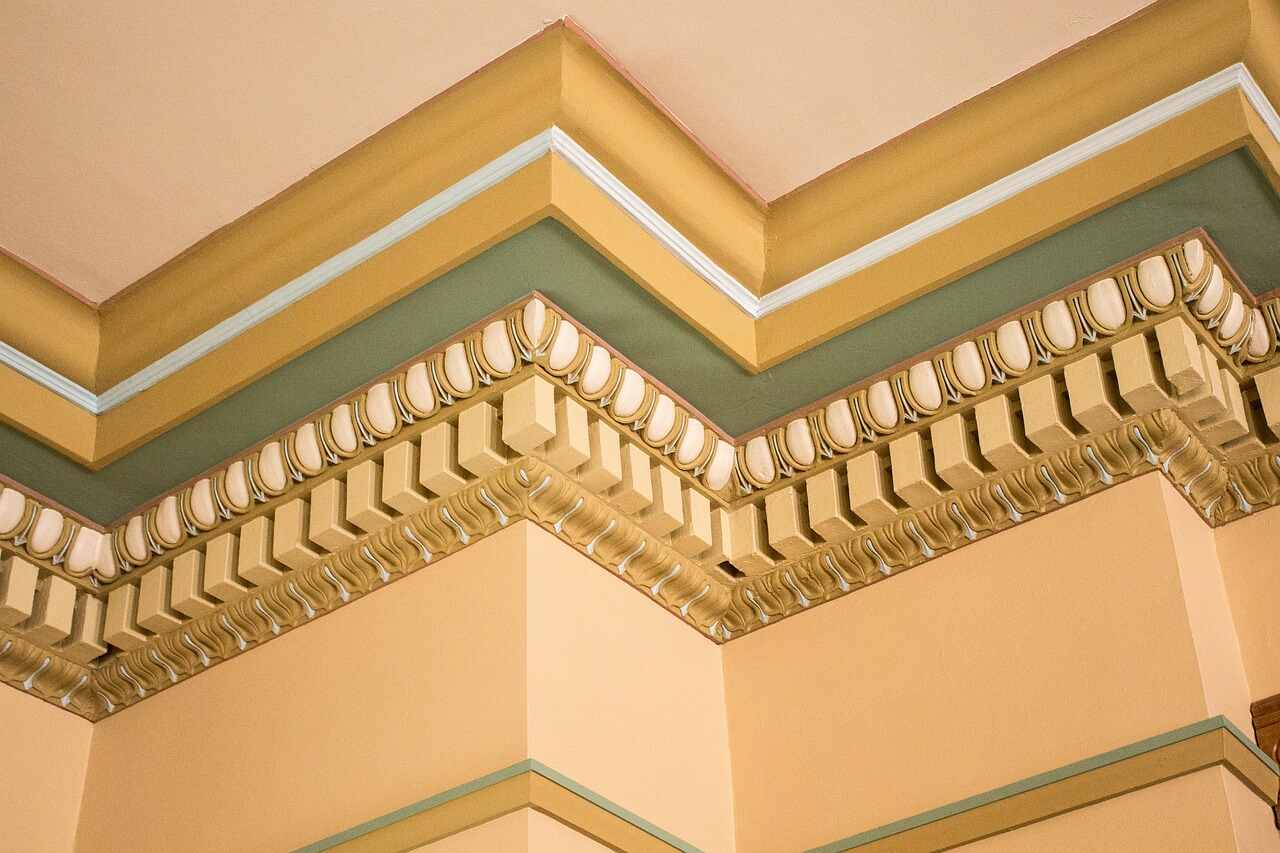Crown molding is one of the least expensive but most noticeable and profitable home improvements you can make. Decorative molding may breathe new life, charm, and elegance into an otherwise dull living area. Crown molding is one of those home improvements that a handy homeowner may make. If you’re determined to install crown molding on your own, though, there are a few rules you should keep in mind to make the process more efficient and save money on supplies.
Identify your material requirements first.
You’ll need to calculate the quantity and type of molding you’ll require. You must measure and mark your walls if you want an accurate cost estimate. Take the rounded-up measurement for each division. Always buy the next size up in molding if any of your wall measurements are within a few inches of a length.
The second step is to formulate a strategy.
Since we need to install the molding in a specific order, it would be helpful to do a quick top-down drawing of the space to determine which wall, to begin with. To simplify things, let’s number the walls in counterclockwise order, starting with the one facing the door.
Also, let’s hang up our installation guidelines. Place a piece of molding at each of the four corners, inside and out, to designate where the floor will be. Mark your installation line on the wall using a chalk line stretched between two points. Find and label the studs and joists beneath the installation line as well.
Third, set up the initial length.
First, you’ll need to measure your beginning wall, then use a miter saw to cut your first piece of molding to length. Next, place the molding along the installation line, and using 8d finish nails, start nailing it into place from the center outward. Center your nails in the notch between the top and bottom of the molding.
Jointing an inside corner is the fourth method.
We use a coped cut for interior cuts to join the molding’s face properly. Mount the molding on the saw so that the top edge is flush with the table and the bottom edge is flush with the saw fence. Adjust the saw’s blade angle to 45 degrees. Swing the saw left if you’re coping a left-side corner or right if you’re coping a right-side corner. If the molding’s long edge faces the back, you’re doing it right.
Now we’ll fix the inside corner joint to ensure it fits perfectly. Put a pen mark on the face of the molding right at the miter cut. To cut along the pen-marked edge, tilt your coping saw five degrees. Make sure you have a snug fit by holding the item against the wall.
Before continuing, ensure you know what kind of cut the opposite end of your molding needs. If this is another inside corner, measure from where you finished installing the first piece (the top edge) to the new hub. Make a square cut with your miter saw by marking the length of this measurement on your coped molding. You can finally nail that molding into place.
Jointing an external corner comes in at number five.
If the end of your molding piece is an outside corner, cut two short lengths of the molding at right angles to each other to find the length you need. Put these together and secure them in your outside corner. Now that your starting piece is in position, we can measure to the edge of the corner piece you’re holding in place. Cut your companion piece of molding to that length.
Installing it, number six
Repeat the previous steps of measuring and cutting to create the outside corner joining the end of the next piece of molding if its opposite end terminates on an inside that does not need a coped lot. The other end must be measured and cut so that it can be flush against the wall. Repeat Step 4 to finish your outside corner if the opposite end of your next piece of molding also ends in a corner that needs a coped cut.
Last but not least, proceed around the room in this fashion. Inside corners should be coped, and exterior corners should be mitered. Before cutting, double-check your measurements. Consult a professional if your home has settled or shifted significantly, causing problems like uneven walls, ceilings, or ceiling heights.
Jason Stalcup is an expert on bespoke home renovation and remodeling thanks to his 20 years of expertise in the industry and his position as owner of Next Day Moulding, a nationwide decorative molding supercenter.
Read also: https://mycheapseo.com/category/technology/
